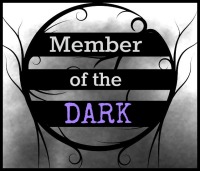While people do pick favorite heroes in Legends of Windemere, there really isn’t a central hero once it reaches Prodigy of Rainbow Tower. Luke Callindor is the first one we meet and Nyx has been raised as a champion, but that doesn’t put one ahead of the other. Adding Sari, Delvin, Timoran, and Dariana into the mixes makes things more of a balancing act than a deeper supporting class. Every hero gets at least one story that focuses on them and they serve an important role in each book. This is why the prophecy says there is a team of heroes instead of one. So, what are some things to consider when writing an ensemble series?
- Introducing heroes one at a time can help define them to the audience. You don’t have to juggle the origin, description, and other first appearance necessities between multiple characters. You and the reader can focus on the one. For example, Luke and Nyx are locked into their roles and personalities by the time Sari shows up in Allure of the Gypsies. It becomes more about fitting the new character into an established group instead of getting all of the heroes into line. Think of it as serving a full course meal instead of a buffet.
- Try to give every character either something to do in a scene or a good reason for not being involved. The bigger the group, the harder this is to do. You really only have to sit down and think if they’re needed for the particular mission, conversation, or whatever it is. Sometimes one of the heroes might not even care enough to be involved in whatever is going on. There are a lot more options than people realize. Exhaustion and getting lost are two of my favorites.
- Not everyone has to get along perfectly, but too much friction can be a distraction from the main plot. It does make things easier for the heroes to be close friends or at least respect each other. Yet, it is also realistic that people who are forced to work together might not mesh well. This depends a lot on how the group is formed. By choice or necessity can make things smoother, but not always. Again, you do need to have there be some unity even among rivals or the group falls apart. Think Wolverine and Cyclops here. They don’t always get along, but there’s respect between them.
- Consider the roles of a group to avoid characters stepping on each others toes. You usually can’t have all leaders or all rebels without things getting messy. This can help with developing their personalities too. One who is impulsive, but loyal can be the source of trouble. A hero who is cautious can counter that and become the strategist. You have the muscle, the speed, the stealth, the heavy artillery, and other roles that can be put together. A lot of variation can be done here, but you will be called out on have a group of clones.
- As important as it is to evolve the group, you also need the the heroes to develop. Both of these work together and in unison. A character’s mental health and decisions can affect the others. You have to balance this when it comes to attention. Some characters may be more stable than others, which helps because they become rocks for the more fluid personalities. For example, Timoran changes very little in comparison to Sari due to their opposite temperament. He is very calm and thoughtful while she gets emotional rather quickly. When together, he can help her stay grounded and she can loosen him up.
- Never be afraid to split groups up to get stories moving quicker. This can help flush out relationships that need more attention. Not to mention it helps give every hero something to do over the course of the story. You don’t want a character to be left behind or be about as important as a potted plant.
- Just because a story focuses on one hero, it doesn’t mean the others should be forgotten. I make it a point to give every hero at least one moment to shine in a book. It might not give them a lot of growth, but it retains their importance to the overall story. Obviously, this deals more with series or short story collections.






Great post about ensembles. Usually these go into why writers should combine and eliminate some characters. This one teaches us how to make them all useful and important. Love it.
LikeLike
Thanks. Good point on the combos and eliminations. A lot of authors seem to go the Jack-of-all-trades route. It can be fun, but I’ve found those characters get a lot of complaints for being too perfect. Ensembles definitely help minimize the risk of perfection.
LikeLiked by 1 person
I had to do some ensemble work in TCOS. Their personalities told me what they’d be good at, and where they could help the group. It was a wonderful experience.
LikeLike
Cool. I tend to go the opposite way with jobs/roles coming first. Think it stems from D&D where you build the stats and role before giving flesh.
LikeLiked by 1 person
It was like a DeMille movie. Lots of characters and not all get tons of screen time. Those who deserved it got to add to the world building based upon their skills. It was a lot of fun that way.
LikeLike
Never saw a DeMille movie. Sounds unique.
LikeLiked by 1 person
Bet you have. The Ten Commandments, Cleopatra, etc.
LikeLike
Only Ten Commandments once because I’m Jewish. For some reason, tv stations keep showing it like we aren’t doing a sedar.
LikeLiked by 1 person
I don’t think anyone does ensembles better, Charles. Nice to get a little insight into your process.
LikeLike
Thanks. Feel like I should take a bow here. Hope the rest of the theme goes as smoothly. 🙂
LikeLiked by 1 person
Yes, take a bow.
LikeLike
I agree, having a group can help a story move along since your characters can be in different places and let the reader know things that would be awkward for a single POV.
LikeLike
The POV is always a challenge. Even with a group, most authors designate only one character for the POV.
LikeLiked by 1 person
Reblogged this on Don Massenzio's Blog and commented:
Here’s a great blog post from the Legends of Windemere blog on how you should handle a plethora of heroes.
LikeLike
Thanks for the reblog. 😀
LikeLiked by 1 person
You’re welcome. Great post.
LikeLike
Pingback: Smorgasbord Daily Blogger – Tuesday 10th January -Interviews, Swamps, Freezing Texas! and A writer’s Worth | Smorgasbord – Variety is the spice of life
Pingback: Prodigy 'The One And Only" (Video) | StrictlyHIpHopMedia